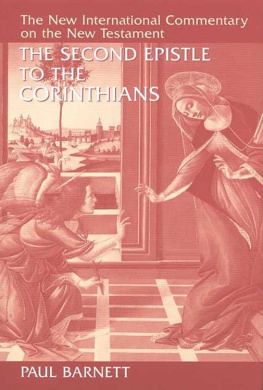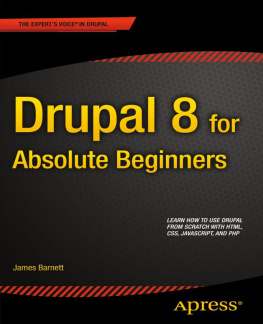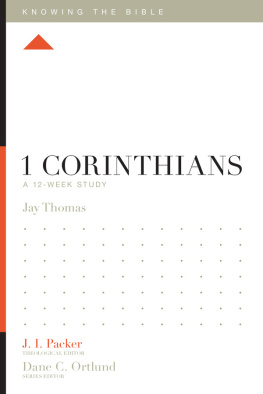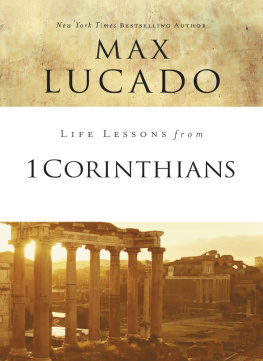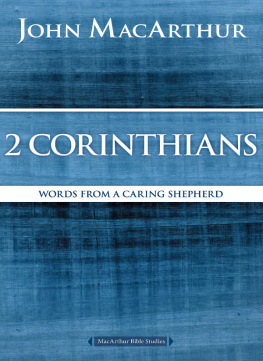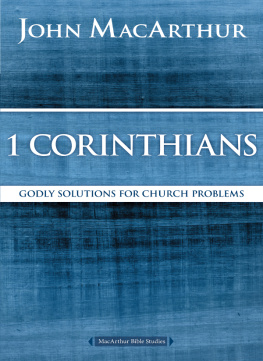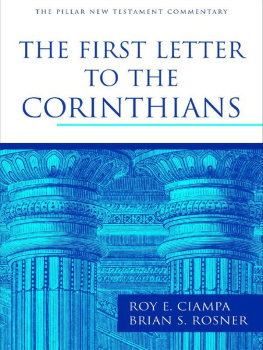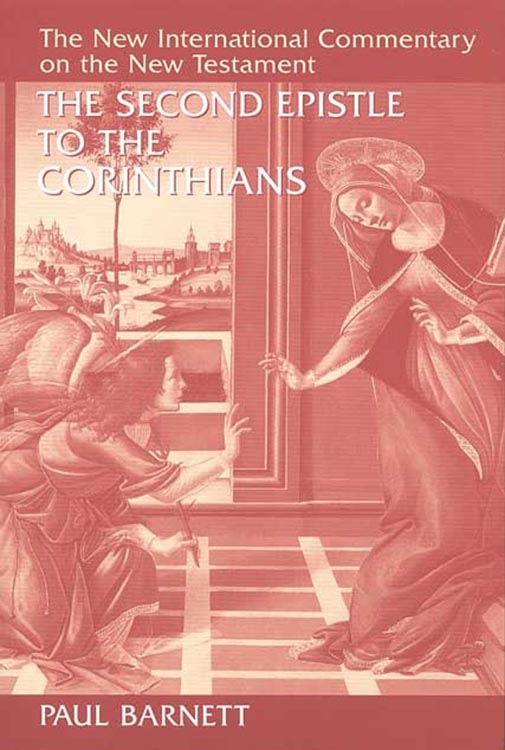
The Second Epistle
to the
CORINTHIANS
Paul Barnett
W ILLIAM B . E ERDMANS P UBLISHING C OMPANY
G RAND R APIDS, M ICHIGAN / C AMBRIDGE, U . K .
1997 Wm. B. Eerdmans Publishing Co.
2140 Oak Industrial Drive N.E., Grand Rapids, Michigan 49505
P.O. Box 163, Cambridge CB3 9PU U.K.
All rights reserved
Library of Congress Cataloging-in-Publication Data
Barnett, Paul (Paul William) The Second Epistle to the Corinthians / Paul Barnett.
p. cm.
(The new international commentary on the New Testament)
Includes
eISBN 978-1-4674-2263-5
ISBN 978-0-8028-2300-7 (cloth: alk. paper)
1. Bible. N.T. Corinthians, 2ndCommentaries.
I. Title. II. Series.
BS2675.3.B29 1997
227.3077dc21 9649755
CIP
Scripture taken from the HOLY BIBLE: NEW INTERNATIONAL VERSION. NIV. Copyright 1973, 1978, 1984 by International Bible Society. Used by permission of Zondervan Publishing House.
FOR
ANITA BARNETT
in gratitude
for
much sacrifice
in apostolic-style
long-suffering
CONTENTS
INDEXES
It has now been nearly thirty-five years since the original commentary on 2 Corinthians, written by Philip Edgcumbe Hughes, appeared in this series. This was a significant volume in the original series not only because it received deserved critical acclaim but also because it set a new standard for the series (acknowledged by the editor, Ned Stonehouse). Though now dated in many ways, it will, and should, continue to be consulted. Nonetheless, the proliferation of Pauline studies, including works on 2 Corinthians, has meant that this volume, too, needed to be replaced so as to bring the busy pastor and student up to date on the interpretation and theology of this very important Pauline letter.
This task has now been brought to a happy conclusion by the Rt. Rev. Dr. Paul Barnett, Anglican bishop of North Sydney, New South Wales, Australia. Dr. Barnett took his first degree in classics and history at the University of Sydney. His Ph.D. was awarded in 1978 by the University of London for a thesis entitled The Jewish Sign Prophets in Their Theological and Political Setting. In addition to spending many years in the parish ministry, he held teaching posts at Robert Menzies College (Macquarie University) and the University of Sydney before being elevated to bishop in 1990.
Besides his obvious exegetical skills, Dr. Barnett thus brings two other specialties to the writing of this commentary: first, his expertise in the history of the first Christian century, including Roman history and sociology as well as intertestamental and first-century Judaism; second, the fact that he is bishop, which has given him a special interest in the pastoral dimension of this letter, which the reader will find highlighted throughout. Although it was not by design, it turns out to be a pleasant coincidence that the replacement volume is thus written by an Anglican clergyman from Australia, just as was Dr. Hughes (although the latter was only born in Australia and spent most of his life elsewhere).
As with several other replacement volumes in the series, the New International Version has been used as the basis of comment, although the reader will quickly recognize that the commentary rests ultimately on the Greek text itself.
This is a welcome addition to the series.
G ORDON D . F EE
This commentary began its life as Bible studies at student and missionary conventions in the 1970s. Although many commentaries had been devoted to 2 Corinthians, it was at that time relatively closed to the general reader, apart from some well-known passages. This seemed regrettable because its total message is so powerful and relevant. Those Bible studies issued in a commentary in the Bible Speaks Today, whose editor is the celebrated John R. W. Stott.
During the 1980s it was my privilege to work as an academic colleague of Professor E. A. Judge at Macquarie University. Clustered around Edwin Judge, who is an authority on the cultural world of the apostle Paul, were a number of younger scholars who have produced innovative studies, including works on Pauls Second Letter to the Corinthians. The exciting ethos of this great scholar served to keep alive my own long-standing interest in the letter.
An invitation to write for this series brought me into relationship with its distinguished editor, Gordon D. Fee. Fees knowledge of the Corinthian correspondence is of the highest order, and his commentary on the First Letter set new standards for this and all other commentaries in this series. Certainly Fees goalthat texts be allowed to speak within the context of their paragraphs and extended passages, all within the historical setting of the letterhas also been mine. I have deeply appreciated Dr. Fees advice and encouragement; whatever shortcomings may be found in this exposition are entirely mine.
There is an extensive bibliography on Second Corinthians, including commentaries, monographs, and articles. This letter is a scholars favorite, even if it remains less well known to general readers than some of Pauls other letters. It has not been possible to refer to more than a selection of the scholarly works in the footnotes of this book. Of the commentaries I consulted, those by Plummer, Barrett, Bultmann, Hughes, Martin and Furnish exerted the greatest influence on me. Furnishs commentary in particular is nearly exhaustive, thorough, and full of insight. The first part of Margaret Thralls International Critical Commentary volume appeared too late for much more than a survey of her very detailed presentation; the second volume is yet to appear. An Index of Authors is found at the end of this commentary, and a Select Bibliography of much-cited works, including commentaries, appears near the beginning.
For the sake of historical context Dr. Fee placed 2 Corinthians in chronological order in listing Pauls letters. I have followed his general procedure by citing in order letters of Paul known to have been written prior to 2 Corinthians. Thus I have given as his first letters 1 and 2 Thessalonians, followed by 1 Corinthians. Unlike Dr. Fee, I tend to favor an early date for Galatians, but since this is a matter of scholarly debate that has minimal bearing on issues in 2 Corinthians, I have listed that letter with others that are known to come after 2 Corinthians. It has been interesting to trace Pauls use of vocabulary in 2 Corinthians through the three letters that are known to have preceded it.
In working closely with his text I have repeatedly been overwhelmed by the subtlety and sensitivity of the one on whose letter I have been privileged to spend so much time. Though long departed, he still ministers to us through these remarkable, God-breathed words.
I express my gratitude to Bishop Donald Robinson, Drs. Chris Forbes, Bruce Harris, and Peter OBrien, and Miss Evonne Paddison for their kind advice on many points. The laborious work of indexing was done by Pat Geidans and Tim and Sarah Watson.
Above all, I place on record my deep thanks to my wife Anita, whose side I would all too often leave in the early hours of the morning to spend time with one whom she humorously called your Corinthian woman. Without her prayerful, cheerful, and ongoing encouragement it would have been virtually impossible to see this work through to the end.
P AUL B ARNETT
For text-critical symbols see the Introduction to Erwin Nestle and Kurt Aland, Novum Testamentum Graece (26th ed.).
AB Anchor Bible
Abod. Zar . Aboda Zara
AJP American Journal of Philology
ANRW H. Temporini, ed., Aufstieg und Niedergang der rmischen Welt
Next page
